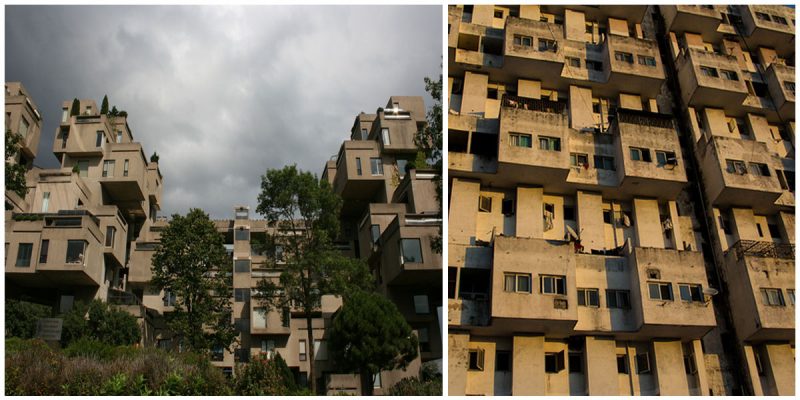This 1967 experiment in modular architecture was designed to be a new model for urban living. Designed by the Israeli-Canadian architect Moshe Safdie for the 1967 World’s Fair (Expo ’67), held from April to October, Habitat 67, or simply Habitat, was originally intended as an experimental solution for high-quality housing in dense urban environments. The housing complex is located at Cité du Havre in Montreal, Quebec, Canada.
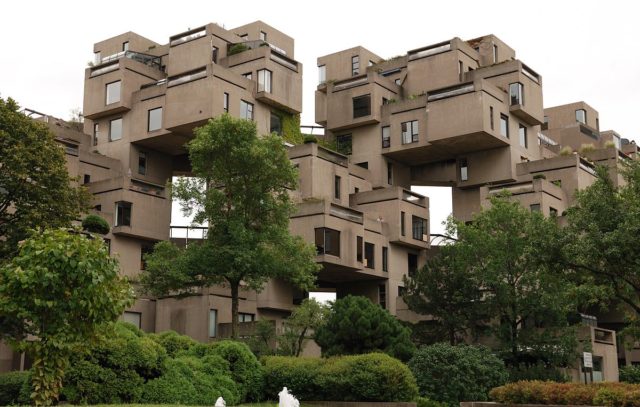
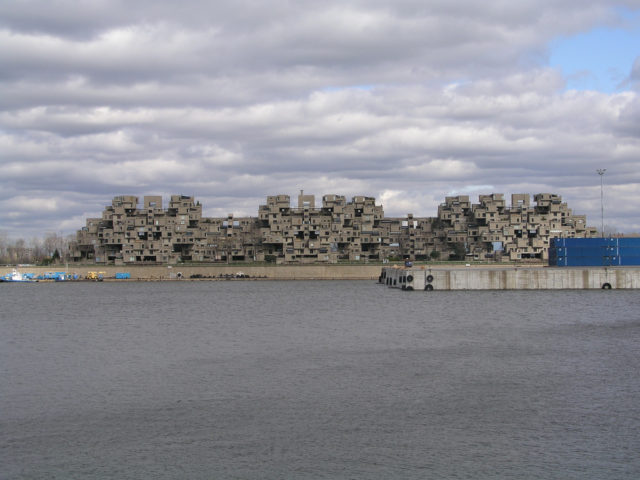
The project originated as Safdie’s thesis at McGill University in 1961 (then only 25 years old), titled “A Case for City Living” and described as “A Three-Dimensional Modular Building System”. Expo ’67 has been widely regarded as the most successful World’s Fair of the 20th century, with over 50 million visitors and 62 nations participating.
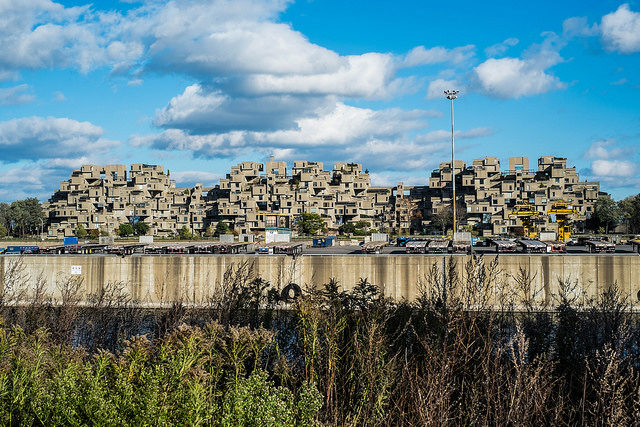
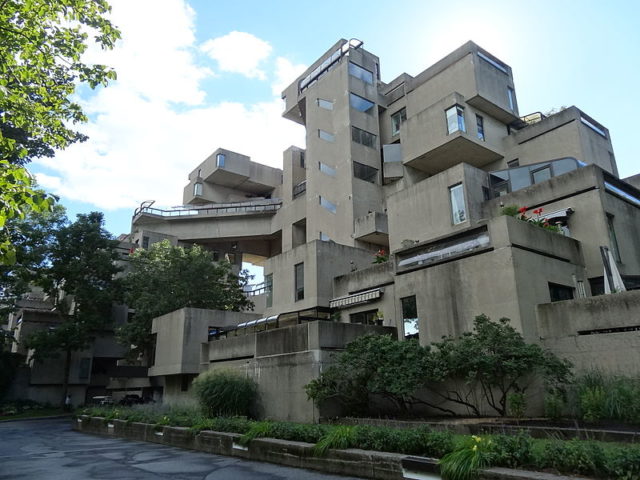
The development was designed to integrate the benefits of suburban homes — namely gardens, fresh air, privacy, and multi-leveled environments — with the economics and density of a modern urban apartment building. Habitat 67 comprises 354 identical, prefabricated concrete forms (referred to as “boxes”) arranged in various combinations, reaching up to 12 stories in height. Together these units create 146 apartments of varying sizes and configurations, each formed from one to eight linked concrete units. Each unit is connected to at least one private terrace, which can range from approximately 20 to 90 square meters (225 to 1,000 sq ft) in size. The total area of the property comprises 22,160 sq. m. (238,500 sq ft).
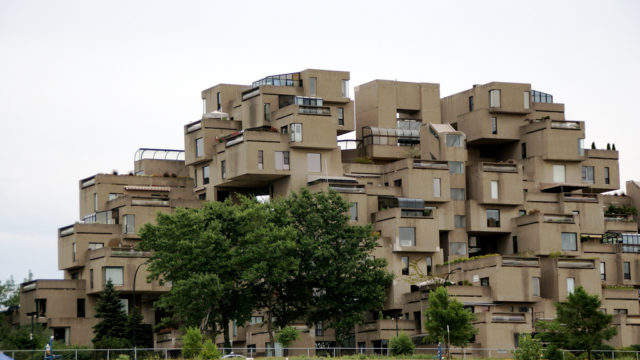
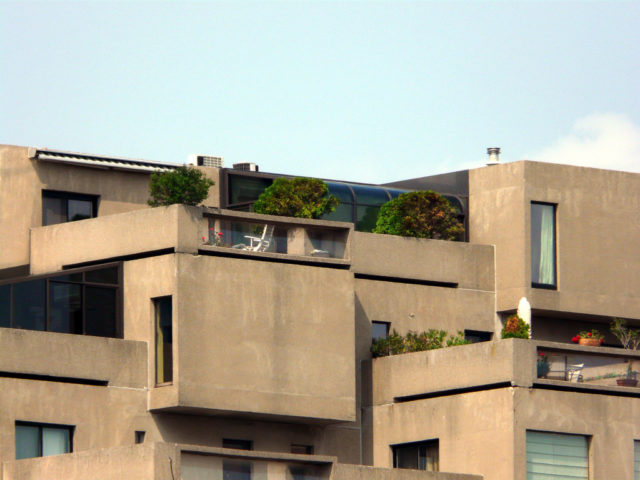
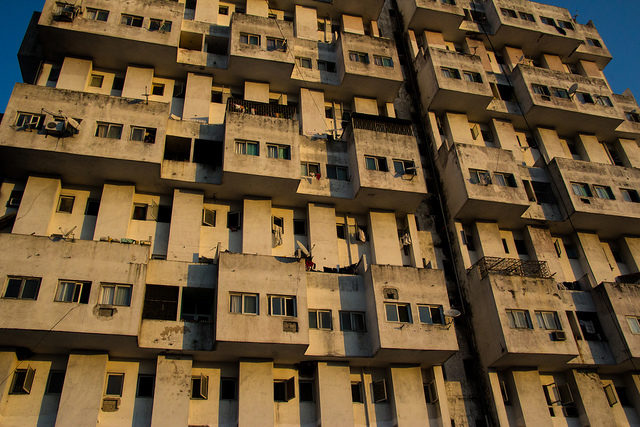
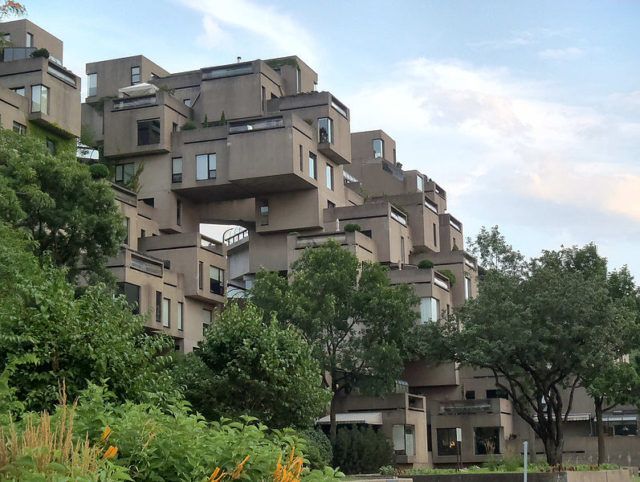
By stacking concrete “boxes” in variant geometrical configurations, Safdie was able to break the traditional form of orthogonal high rises, locating each box a step back from its immediate neighbor. Each apartment is reached through a series of pedestrian streets and bridges, along with three vertical cores of elevators for the top floors.
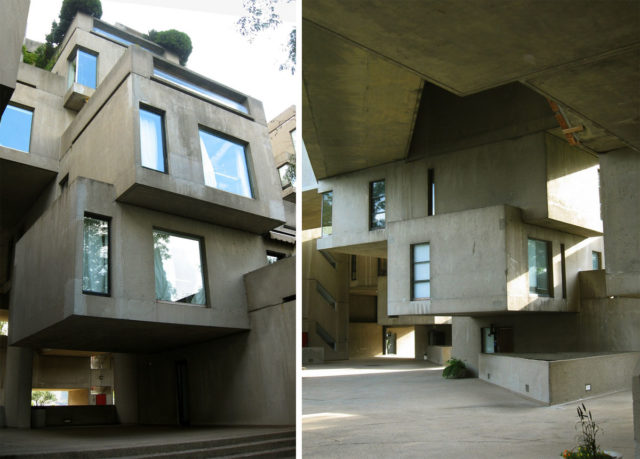
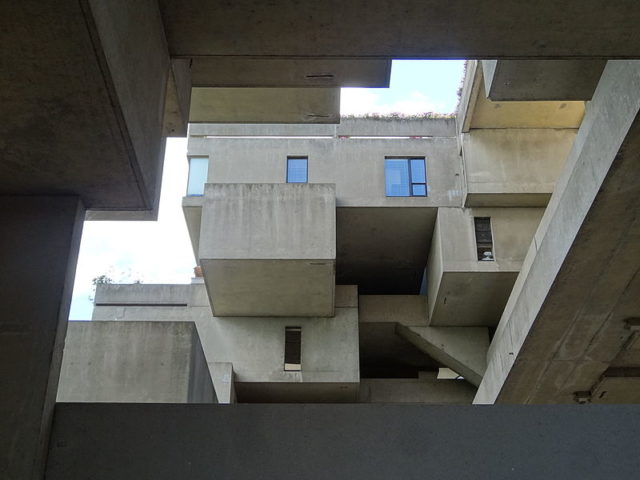
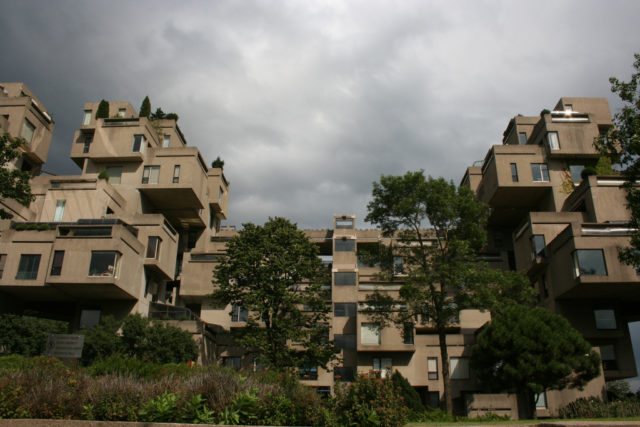
Not only revolutionary in its time, Habitat 67 has continued to influence architecture throughout the decades. In the years following the world exposition, numerous Habitats were constructed around the world: in New York (1967), Puerto Rico (1968), Israel (1969), Rochester (1971) and Tehran (1976). On March 27, 2009, Habitat ’67 was given historic monument status by the Quebec Minister of Culture and the exterior of the building is now a designated heritage site.
